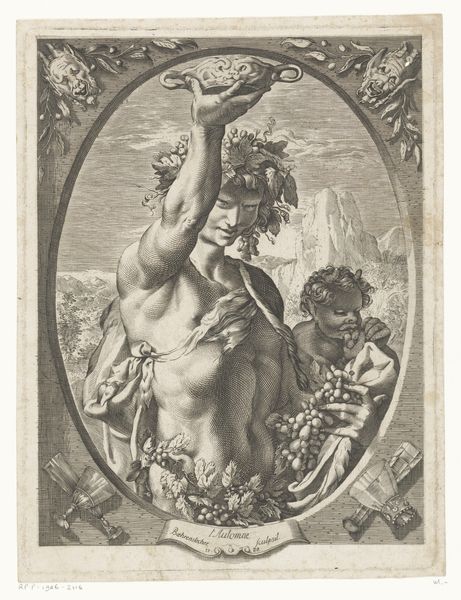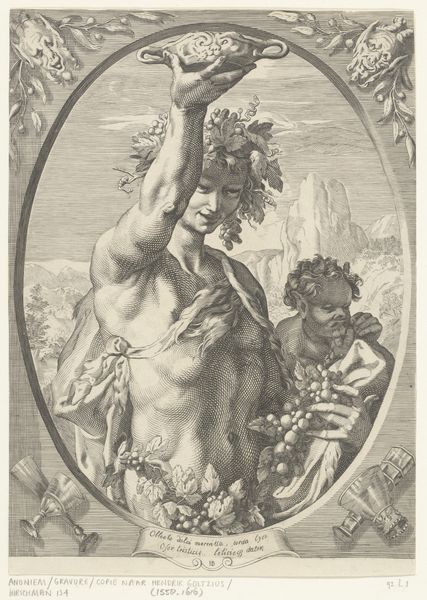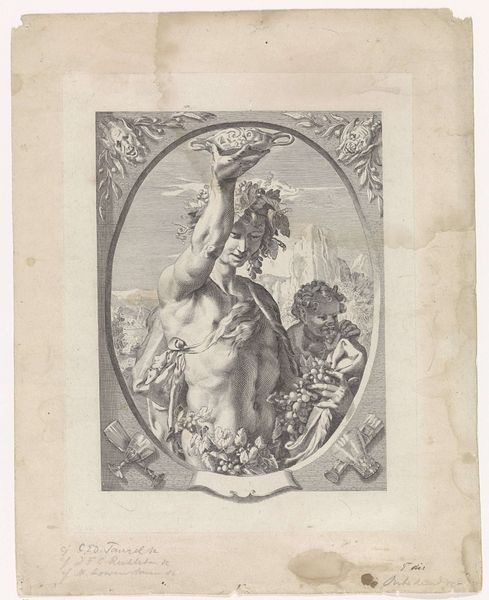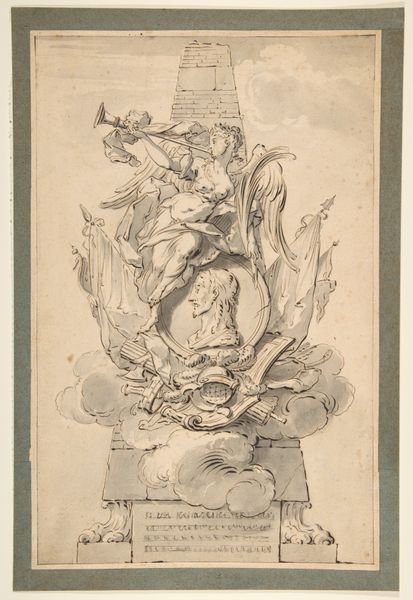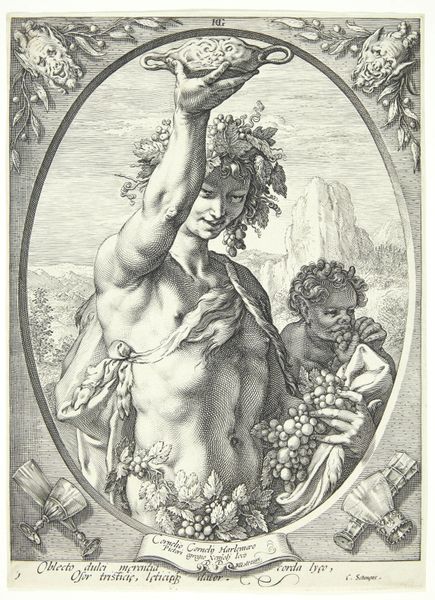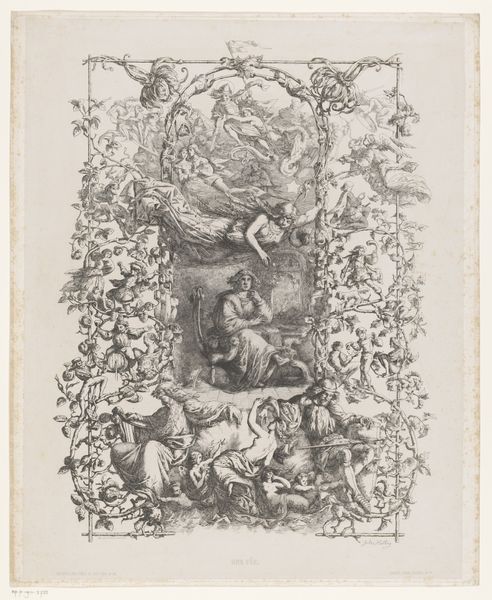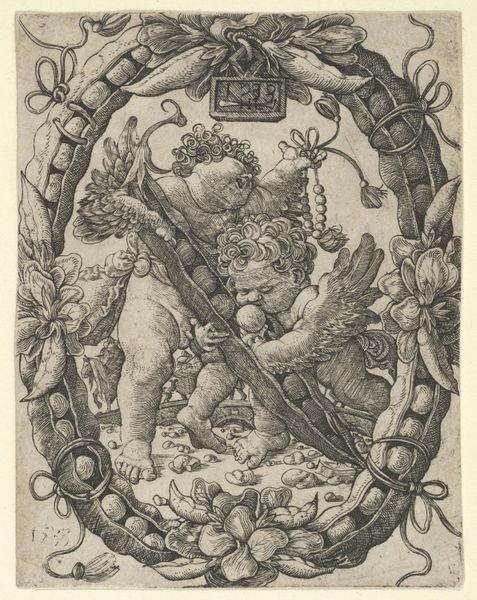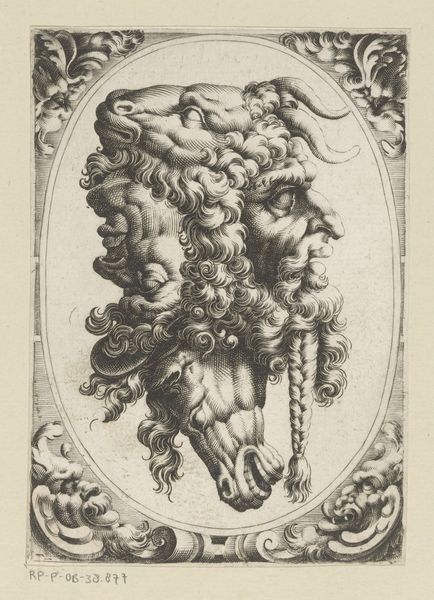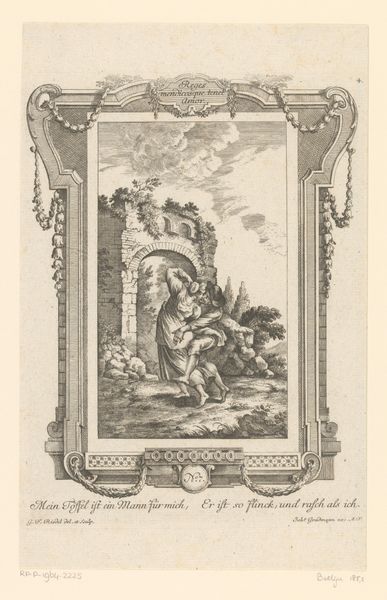
print, engraving
#
allegory
#
baroque
# print
#
figuration
#
nude
#
engraving
Dimensions: 249 mm (height) x 179 mm (width) (plademaal)
Curator: Here we have Isak Henningsen's 1756 engraving, "Bacchus," currently residing here at the SMK. My first impression is how dynamic it feels, the central figure poised and reaching, framed by the decorative oval border. The whole image teems with controlled energy. Editor: An engraving from that era! One really needs to consider the labor and the artisan involved in producing such fine detail. Each line etched onto that plate, reflecting the economy and artisanal practices of the time... impressive. Curator: Precisely! And look at how Henningsen uses line variation to define form and texture. The musculature of Bacchus, the god of wine, the grapes—all rendered with a mastery of technique, really creating a focal point of refined masculinity and natural abundance. Editor: Bacchus, sure. But it all reflects social power, wealth displayed through consumable luxury! The artist must have worked within an entire chain of suppliers and consumers; paper, ink, and so on. The choice of subject becomes almost secondary to the networks of material support that made the work possible. Curator: Perhaps. Still, consider the Baroque aesthetic at play, particularly the allegorical representation. Bacchus, surrounded by vines and a young satyr, evokes themes of revelry, fertility, and a certain untamed exuberance typical for Baroque-era allegories, right? Note the composition. A clear upward movement towards that ornate vessel he is holding. Editor: Of course, and speaking of, do we know if there was perhaps some notable commission for this, or some relevant event connected with the making of prints around these bacchanal subjects? Were prints being marketed a certain way, connecting them with consumption outside art spaces too? All important in thinking about art as not simply something looked at, but used and circulated. Curator: That adds layers to our understanding, surely. I suppose for me the elegance and sensuality radiating from "Bacchus" reflects both its aesthetic skill and thematic depth of its time. It definitely creates that kind of visual pleasure which I will enjoy every single time. Editor: Agreed; to fully understand it, though, we need to investigate how it was materially produced and consumed. From that we get such a strong feel for cultural context in ways other things are silent about. Curator: Food for thought on just how art finds its meanings, right? Editor: Precisely, meaning made by production, circulation, use… it all feeds the picture.
Comments
No comments
Be the first to comment and join the conversation on the ultimate creative platform.
